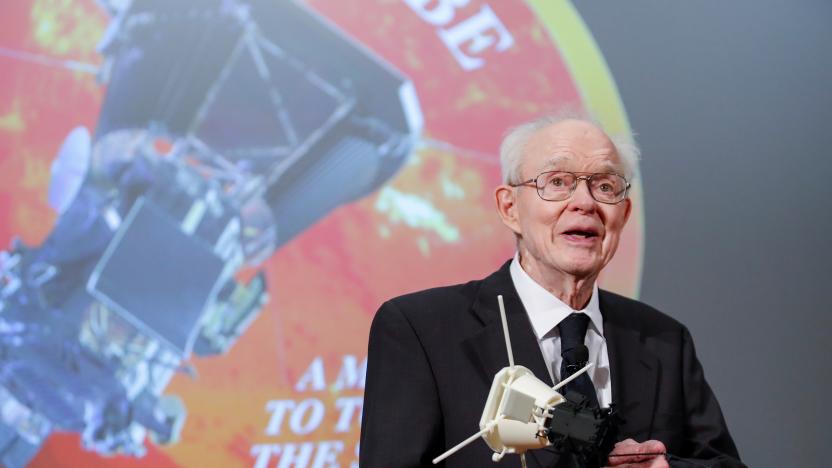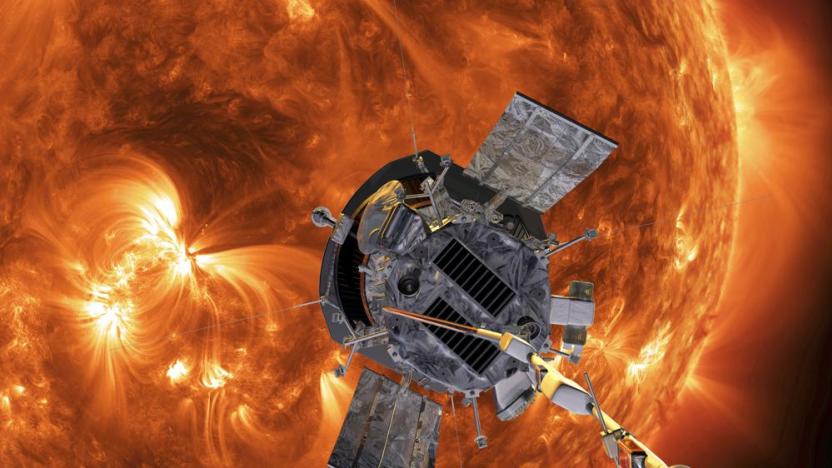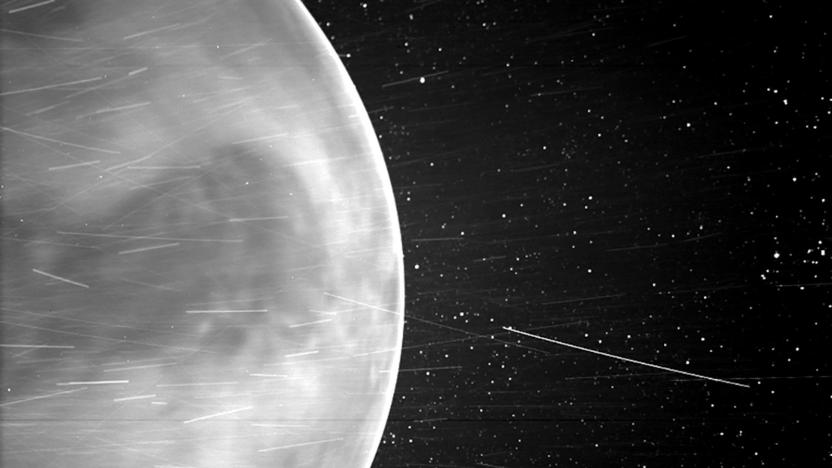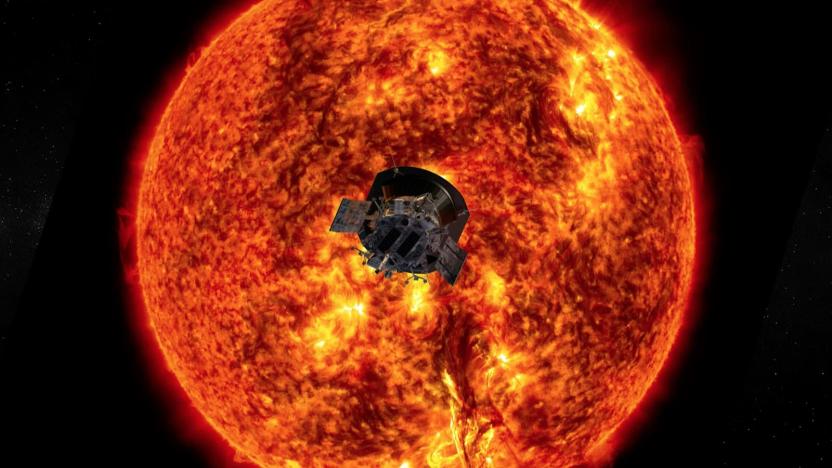parker solar probe
Latest

Heliophysics pioneer Eugene Parker dies at 94
In 2018, Parker witnessed the launch of a solar probe NASA named after him.

NASA spacecraft enters the Sun's corona for the first time
The Parker Solar Probe has become the first spacecraft to fly through the Sun's upper atmosphere or corona.

NASA's Parker Solar Probe detected natural radio emissions from Venus
NASA's Parker Solar Probe detected natural radio emissions from Venus, offering new insights into the planet's atmosphere.

NASA's closest-ever Sun flybys reveal how solar wind works
As promised, NASA has presented the first results from the Parker Solar Probe -- and they're already providing a treasure trove of insights regarding the Sun. Most notably, the solar wind doesn't behave entirely like scientists expected. There are flips in the Sun's magnetic field direction (nicknamed "switchbacks") that manifest in the solar wind inside Mercury's orbit, but not further. Moreover, the sideways movement of the solar wind near the Sun was not only "much stronger" than expected, but straightened out sooner than predicted as well.

NASA set to reveal findings from its Parker Solar Probe tomorrow
NASA is ready to present its first findings from the Parker Solar Probe mission and will reveal what it has discovered to the public on December 4th. The probe flew closer to the sun -- three times -- than any other spacecraft before it over the past year, collecting data as it went along using four science instruments. Shortly after it launched, its team members discovered that the probe is capable of a higher downlink rate than they thought. They used that capability to their advantage and retrieved a lot more data from its first two flybys than they expected to get.



